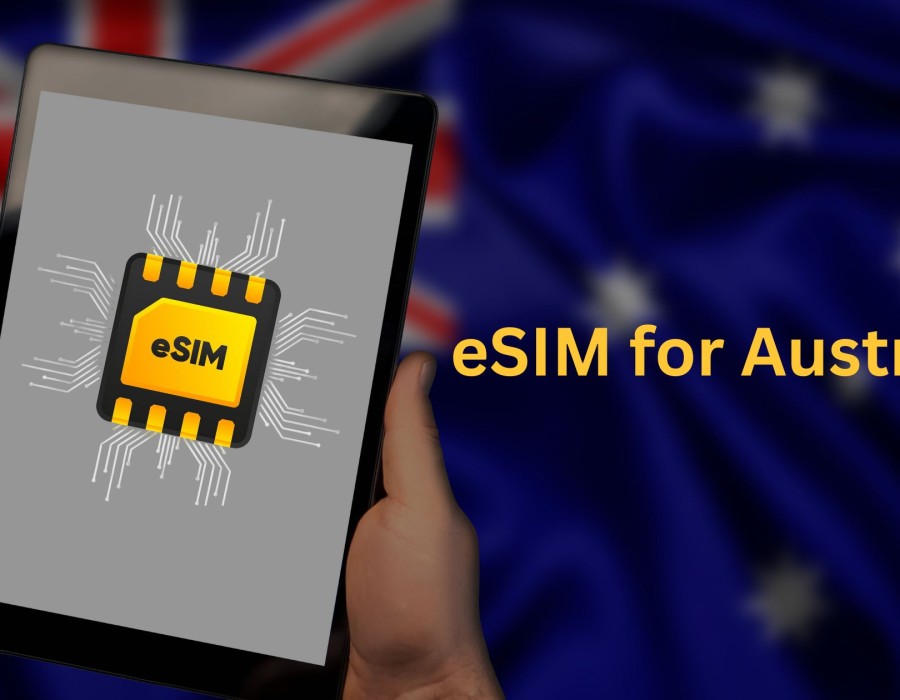In 2025, staying connected while traveling has never been easier, thanks to advancements in eSIM technology. An eSIM, or embedded SIM, eliminates the need for a physical SIM card, allowing users to switch between mobile carriers and plans with a few taps on their smartphone. For travelers heading to Australia, eSIM technology is a game-changer, providing seamless connectivity without the hassle of buying and swapping physical SIM cards.
This guide delves into everything you need to know about using an eSIM for Australia in 2025—from how it works to its benefits, activation steps, and tips for making the most of this cutting-edge technology.
What is an eSIM?
An eSIM is a digital SIM that is embedded directly into your device. Unlike traditional SIM cards, which are physical chips inserted into your phone, an eSIM is programmable remotely. This allows you to activate a cellular plan without needing a physical card.
Key Features of eSIMs:
- Convenience: No need to physically insert or swap SIM cards.
- Multiple Profiles: Store multiple carrier profiles on one device.
- Remote Activation: Activate plans over the internet.
- Compact Design: No physical card means more space for other phone components.
Why Choose an eSIM for Australia?
Australia’s vast landscapes and diverse cities make it a popular destination for tourists, business travelers, and digital nomads. Staying connected is crucial, whether you're navigating remote areas or conducting business in urban centers. Here’s why eSIMs are the ideal choice:
1. Ease of Use
With an eSIM, you can activate a local plan before you even land in Australia. This ensures instant connectivity upon arrival.
2. Flexibility
Switch between multiple carriers and plans based on your needs. Whether you're traveling to Sydney or exploring the Outback, you can adapt your plan to ensure optimal coverage.
3. Cost-Effectiveness
Many eSIM providers offer competitive rates compared to traditional roaming options. You can choose data-only plans or bundles that include calls and SMS.
4. Environmental Impact
By eliminating the need for plastic SIM cards, eSIMs contribute to reducing electronic waste.
How to Get an eSIM for Australia
1. Check Device Compatibility
Ensure your device supports eSIM technology. Most modern smartphones, tablets, and smartwatches are eSIM-compatible. Popular models include:
- iPhone (XR and newer)
- Samsung Galaxy (S20 and newer)
- Google Pixel (3 and newer)
2. Choose an eSIM Provider
Australia has several eSIM providers, both local and international. Consider these options:
- BazTel: Known for its extensive coverage, especially in remote areas.
- Optus: Offers competitive rates and good coverage in urban centers.
- Vodafone: Ideal for affordable international plans.
- Global eSIM Providers: Providers like BazTel and GigSky offer eSIMs tailored for travelers.
3. Purchase an eSIM Plan
Visit the provider's website or app, select a plan, and purchase it. Popular plans include data-only options and packages with calls and SMS.
4. Activate Your eSIM
Activation is straightforward:
- Scan the QR code provided by the eSIM provider.
- Follow the on-screen instructions to download the eSIM profile.
- Set it as your primary or secondary line, depending on your usage needs.
Tips for Using an eSIM in Australia
1. Plan Ahead
Research and purchase an eSIM plan before your trip. This ensures you’re connected as soon as you arrive.
2. Monitor Data Usage
Australia’s vast size means you might rely heavily on mobile data for navigation and communication. Use apps to track your usage and avoid overage charges.
3. Leverage Dual SIM Capability
If your phone supports dual SIM, use the eSIM for data and your physical SIM for calls and texts. This is particularly useful for international travelers.
4. Update Settings for Optimal Performance
Ensure your phone’s settings are updated to prioritize the eSIM network. Adjust data roaming settings as needed.
5. Take Advantage of Wi-Fi
While eSIMs provide excellent mobile connectivity, utilize free Wi-Fi in cafes, hotels, and public spaces to save on data costs.
Benefits of Using an eSIM Over a Traditional SIM
- Instant Setup: Activate your plan without visiting a store.
- No Physical Hassle: Avoid losing or damaging physical SIM cards.
- Global Accessibility: Switch between international carriers with ease.
- Space Efficiency: More room for other hardware in your device.
Challenges and Limitations
While eSIMs offer numerous benefits, it’s important to be aware of potential challenges:
- Device Compatibility: Older devices may not support eSIM technology.
- Limited Availability: Not all carriers or regions offer eSIM services.
- Data-Only Plans: Some eSIMs lack voice and SMS capabilities.
- Network Issues: In remote areas, coverage may still be limited.
Future of eSIM Technology in Australia
As eSIM adoption grows, Australia is set to become a global leader in this technology. Predictions for the future include:
- Wider Coverage: Expanded networks to include even the most remote locations.
- 5G Integration: Faster speeds and lower latency for eSIM users.
- Enhanced Features: More customizable plans tailored to user needs.
- Increased Compatibility: Broader device support, including wearables and IoT devices.
Conclusion
The eSIM revolution is transforming the way we stay connected, and Australia is at the forefront of this shift. Whether you're a tourist exploring the Great Barrier Reef, a digital nomad working from Melbourne, or a business traveler attending meetings in Sydney, an eSIM for Australia in 2025 offers unparalleled convenience, flexibility, and cost-effectiveness.
By understanding how eSIMs work and choosing the right provider and plan, you can make the most of this cutting-edge technology. Say goodbye to the hassle of physical SIM cards and embrace the future of mobile connectivity—starting with your journey to Australia.





Comments